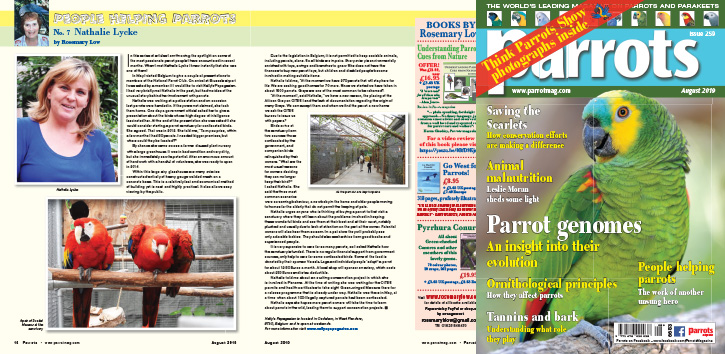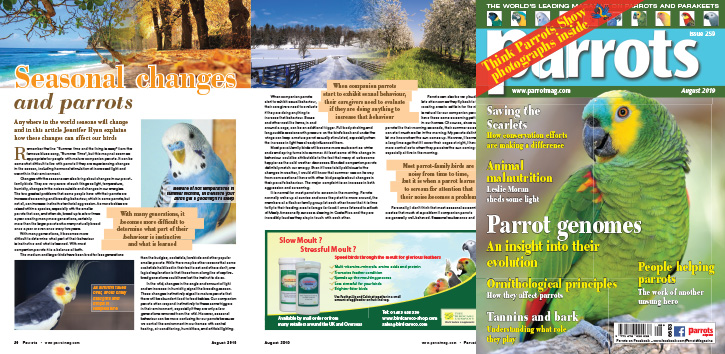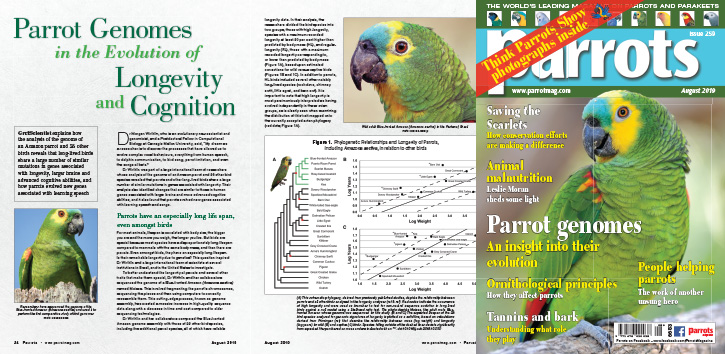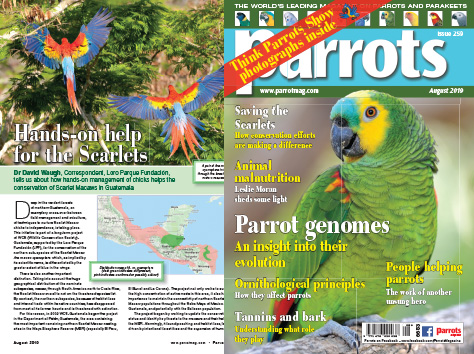
No. 7 Nathalie Lycke
In this series of articles I am throwing the spotlight on some of the most passionate parrot people I have encountered in recent months. When I met Nathalie Lycke I knew instantly that she was one of them!
In May I visited Belgium to give a couple of presentations to members of the National Parrot Club. On arrival at Brussels airport I was asked by a member if I would like to visit Nally’s Papegaaien. I had very briefly met Nathalie in the past, but had no idea of the unusual story behind her involvement with parrots.
Nathalie was working at a police station and on occasion lost parrots were handed in. If they were not claimed, she took them home. One day a government official asked her to give a presentation about the birds whose high degree of intelligence fascinated her. At the end of the presentation she was asked if she would consider starting a parrot sanctuary for confiscated birds. She agreed. That was in 2012. She told me, “To my surprise, within a few months I had 50 parrots. I needed bigger premises, but where could they be located?”
Buy Now!

Anywhere in the world seasons will change and in this article Jennifer Ryan explains how these changes can affect our birds
Remember the line “Summer time and the living is easy” from the famous blues song, “Summer Time”, but this may not seem as appropriate for people with mature companion parrots. It can be somewhat difficult to live with parrots if they are experiencing changes in the season, including hormonal stimulation of increased light and warmth in their environment.
Changes with the seasons can also bring about changes in our parrot-family birds. They are very aware of such things as light, temperature, humidity, changes in the noises outside and changes in our energies. The two greatest problems that some people have with their parrots are increased screaming and breeding behaviour, which in some parrots, but not all, can increase instinctive territorial aggression. As more babies are raised within a species, especially with the smaller parrots that can, and often do, breed up to a few times a year creating many more generations, certainly more than the larger parrots who many naturally breed once a year or even once every two years.
With many generations, it becomes more difficult to determine what part of their behaviour is instinctive and what is learned. With most companion parrots it is a balance of both.
Buy Now!

GrrlScientist explains how the analysis of the genome of an Amazon parrot and 26 other birds reveals that long-lived birds share a large number of similar mutations in genes associated with longevity, larger brains and advanced cognitive abilities, and how parrots evolved new genes associated with learning speech
Dr Morgan Wirthlin, who is an evolutionary neuroscientist and genomicist, and a Postdoctoral Fellow in Computational Biology at Carnegie Mellon University, said, “My dream as a researcher is to discover the processes that have allowed us to evolve complex vocal behaviours, everything from human speech, to dolphin communication, to bird song, parrot imitation, and even the songs of bats.”
Dr Wirthlin was part of a large international team of researchers whose analysis of the genome of an Amazon parrot and 26 other bird species revealed that parrots and other long-lived birds share a large number of similar mutations in genes associated with longevity. Their analysis also identified changes that are similar to those in human genes associated with larger brains and more advanced cognitive abilities, and it also found that parrots evolved new genes associated with learning speech and songs.
Buy Now!

Dr David Waugh, Correspondent, Loro Parque Fundación, tells us about how hands-on management of chicks helps the conservation of Scarlet Macaws in Guatemala
Deep in the verdant forests of northern Guatemala, an exemplary cross-over between field management and aviculture, of techniques to nurture Scarlet Macaw chicks to independence, is taking place. This initiative is part of a long-term project of WCS (Wildlife Conservation Society)-Guatemala, supported by the Loro Parque Fundación (LPF), for the conservation of the northern sub-species of the Scarlet Macaw Ara macao cyanoptera which, as implied by its scientific name, is differentiated by the greater extent of blue in the wings.
There is also another important distinction. Taking into account the huge geographical distribution of the nominate subspecies, macao, through South America north to Costa Rica, the Scarlet Macaw overall is not on the threatened species list. By contrast, the northern subspecies, because of habitat loss and internal trade within its native countries, has disappeared from most of its former haunts and is threatened with extinction.
Buy Now!




